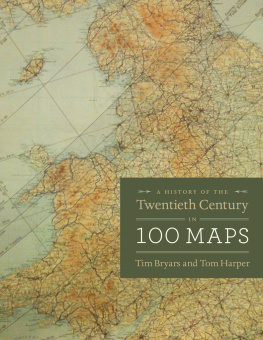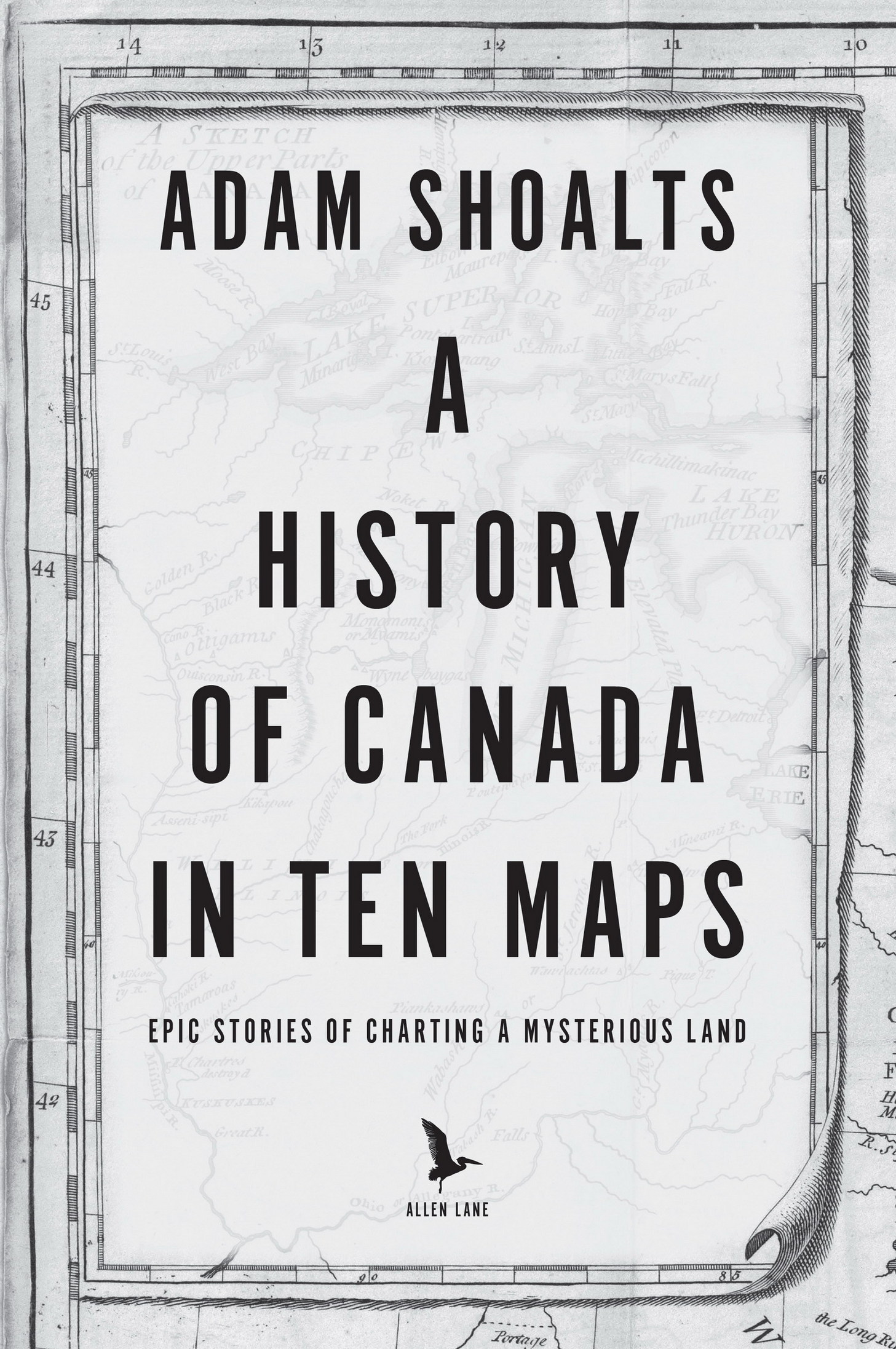All rights reserved. Without limiting the rights under copyright reserved above, no part of this publication may be reproduced, stored in or introduced into a retrieval system, or transmitted in any form or by any means (electronic, mechanical, photocopying, recording or otherwise), without the prior written permission of both the copyright owner and the above publisher of this book.
A history of Canada in ten maps: epic stories of charting a mysterious land / Adam Shoalts.
Issued in print and electronic formats.
1. CanadaHistorical geography. 2. CanadaHistorical geography
Maps. 3. Historical geographyMaps. 4. CartographyCanadaHistory.
5. CanadaHistory. 6. CanadaMaps. I. Title.
Cover images: (photo) Duncan Andison/Arcangel; (map) Samuel de Champlains map of New France (1632): Library and Archives Canada/Alexander E. MacDonald Canadiana Collection/e010694118; Interior image: (title page) A General Map of the Middle British Colonies, in America. Robert Sayer and John Bennett (Firm), 1776: David Rumsey Map Collection.
INTRODUCTION
Geographerscrowd into the edges of their maps parts of the world which they do not know about, adding notes in the margin to the effect that beyond this lies nothing but sandy deserts full of wild beasts, and unapproachable bogs.
PLUTARCH, Plutarchs Lives, FIRST CENTURY AD
T he best adventures, it seems, often start with a maptypically a tattered old map that has yellowed with age and happens to be missing a crucial piece, like the precise location of buried treasure. Who as a child did not at least daydream of such a map and such an adventure? Consider the treasure map the sailor Edmond Dants followed to find the fabulous fortune of Monte Cristo, or the ones that were always leading Indiana Jones (or more recently, Lara Croft) on some harrowing quest. These maps and stories are, of course, fiction. But hidden away in archives or carefully preserved in temperature-controlled museum cases sit real, historic maps that are even more fascinating.
The ten maps at the heart of this book span nearly a thousand years. They tell storiesstories of adventure, discovery, and exploration, but also of conquest, empire, power, and violence. After all, few maps are wholly innocentthe interesting ones usually arent.
But what exactly is a map?
In the most basic sense, it is a graphic representation of the geography of a particular placeincluding natural features like mountains, islands, rivers, lakes, and oceans or political features like boundaries, cities, towns, empires, and nations. Often maps combine both the natural and the political. But a map is more than just a representation of a particular bit of land or sea.
A map is also a cultural artifacta window into the past and a clue to understanding the worldview of the person or persons who made it. It is a glimpse at what they may have valued and what they didnt, what they desired and what they didnt. What they might have known and certainly what they didnt.
The first maps were probably simple sketches drawn in the sand or mud by our ancient hunter-gatherer ancestors tens of thousands of years ago. They might have delineated a hunting territory, or perhaps a lone hunter might have gone ahead of the main group to scout out fresh hunting grounds, or an area for a camp, then reported back on what he or she found by drawing it with a stick. The earliest maps traced in the sand in Africa would have disappeared with the first strong rain or wind. Those maps, if we could see them, would tell us about what our ancestors valued: good hunting territory with large game animals, sources of fresh water, shelter in caves or elsewhereand maybe even an area where flint could be found for tool making and fire-starting.
Not until people started making their maps in more durable materials was it possible for them to survive. The oldest cave paintings in the world date back an astonishing 40,000 yearsand the oldest maps, while not quite that old, are also found drawn on cave walls. These earliest surviving maps dont depict what we might expectsimple hunting territoriesbut instead chart the stars. One of the oldest is a map dated to around 16,500 years ago found painted on the wall of the famous Lascaux cave in France. This mysterious cave painting appears to show the Pleiades star cluster, as well as the three bright stars known as the Summer Triangle. A similar star map showing constellations has been discovered by archaeologists in a cave in Spain; its thought to have been painted around 14,000 years ago. Humankind, it seems, has always dreamed of the starsof distant horizons and the unknown. Today, 15,000 years later, were still working on mapping the unknown mysteries of our solar system.
Other prehistoric maps may be even older than these maps of the night sky. A curious carved stone unearthed in a cave in Spain has been dated to nearly 14,000 years ago; archaeologists believe its a map of the surrounding landscape, including rivers, ponds, and mountains. Another cave, near Pavlov in the Czech Republic, contains a landscape map that may be older still, which through radiocarbon dating has been tentatively dated to nearly 23,000 years old. Maps, in other words, are older than the earliest writing, cities, or the invention of agriculture. Indeed, maps are one of the oldest examples of abstract human reasoning.
Leaving aside cave drawings and rock carvings, the oldest clearly recognizable maps that have survived the ravages of time are found on clay tablets in ancient Mesopotamia. Mesopotamia, roughly the modern Middle East, is the cradle of civilization: the place where humans first practised agriculture, founded cities, invented the wheel, and developed writing. In the 1930s, archaeologists digging in the desert outside the city of Kirkuk in northern Iraq uncovered an ancient clay tablet with a map etched into it. Dated to 2500 BC, the map shows an area of land between two hills with a river or stream running through it. Cuneiform writing on the tablet explains that the map depicts an estate of 354 iku (roughly twelve hectares) owned by a man named Azala. Three circles on the tablet seem to indicate the cardinal points north, east, and west, though an alternative theory holds that these circles are meant to represent cities. Regardless, the meaning of the clay tablet is clear: it is a property deed or estate mapa reminder that from the very dawn of civilization maps have been instruments of power, of saying that this patch of ground belongs to one person and not another.









